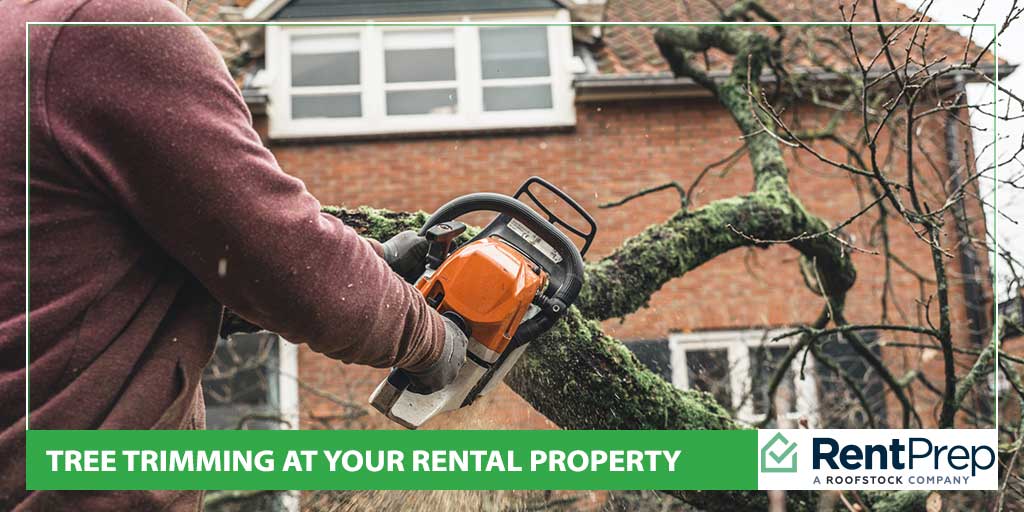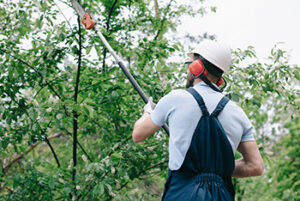

Tree trimming is an active maintenance program that removes branches from a tree. It can be done as a preventative measure to keep branches from damaging structures or overhead lines, or it can be done as a pruning technique to keep the tree healthy.
Trees next to a home can add beauty and shade, but they can also become a problem when branches grow too big or too weak due to disease.
When your rental property, tenants or passing pedestrians are threatened by tree limbs, it’s best to be proactive and get that tree trimmed.

There are many instances that require a tree trimming and getting ahead of the problem can help prevent bigger issues down the road. Here is a list of things to watch for that signal when tree branches may need to be removed.
While tree trimming and pruning can technically be done at any time, it’s generally best to do so in late winter or early spring. The worst times to trim trees are hot dry days and extremely cold days.
Some landlords feel comfortable pruning or trimming smaller trees or branches themselves but for large trees, it’s generally recommended to use a professional team that has the proper tools and techniques for removing large branches. A good rule of thumb for tree trimming is that if the branch is about 10 cm or smaller in diameter, you can probably do the job. If the branch is more than 10 cm in diameter, it’s time for a professional.
Safety is the most important consideration in tree trimming and it usually requires getting up on a ladder, using power tools and possibly getting close to power lines. If there is any doubt about your ability to trim a tree safely, call a professional. Professional services can be costly, however, so plan accordingly.

Even if the tenant and the landlord have spelled out the responsibilities for yard care in the lease agreement, there is generally not any language that specifies tree trimming. Most landlords just think about yard care that centers on weeding, mowing and planting flowers. However, tree trimming is an important part of caring for a property and shouldn’t be overlooked.
The responsibility for trimming a tree of branches may seem like an easy thing to decide, but unless you are clear in your lease agreement or via a landscaping addendum, you and your tenant may encounter a conflict when it comes to caring for this part of the rental property.
The main conclusion is that, both legally and financially, it rarely makes sense to turn a tree-trimming job over to the tenant.
On the flip side, you never want your tenant to take matters into their own hands and start cutting tree branches without permission and without knowing what they are doing.
If the tree trimming is cosmetic for a smaller tree, it might be OK to let tenants know that it is their responsibility as part of an overall yard maintenance agreement.
However, if the tree trimming is needed because the tree is causing or threatening to cause structural problems, it must be classified as maintenance and therefore a landlord’s responsibility to arrange for a solution.
It’s a good idea to clearly spell out in the lease what responsibilities are the tenant’s when it comes to yard maintenance. If this is not addressed in the lease most yard maintenance duties will be the landlord’s responsibility.
Because tree trimming requires special skills, beyond pushing a lawn mower or pulling weeds, most landlords do not expect a tenant to do the work themselves or pay for a professional to perform the task. Landlords should be proactive in taking care of watching for tree issues and scheduling trimming as needed.
How do you handle tree trimming at your rental properties? Please share this article and let us know your solutions in the comments section.
Our tenant screening services have been trusted by over 100,000 landlords & property managers since 2007. SEE OUR PACKAGES
Starting at just $21.00!